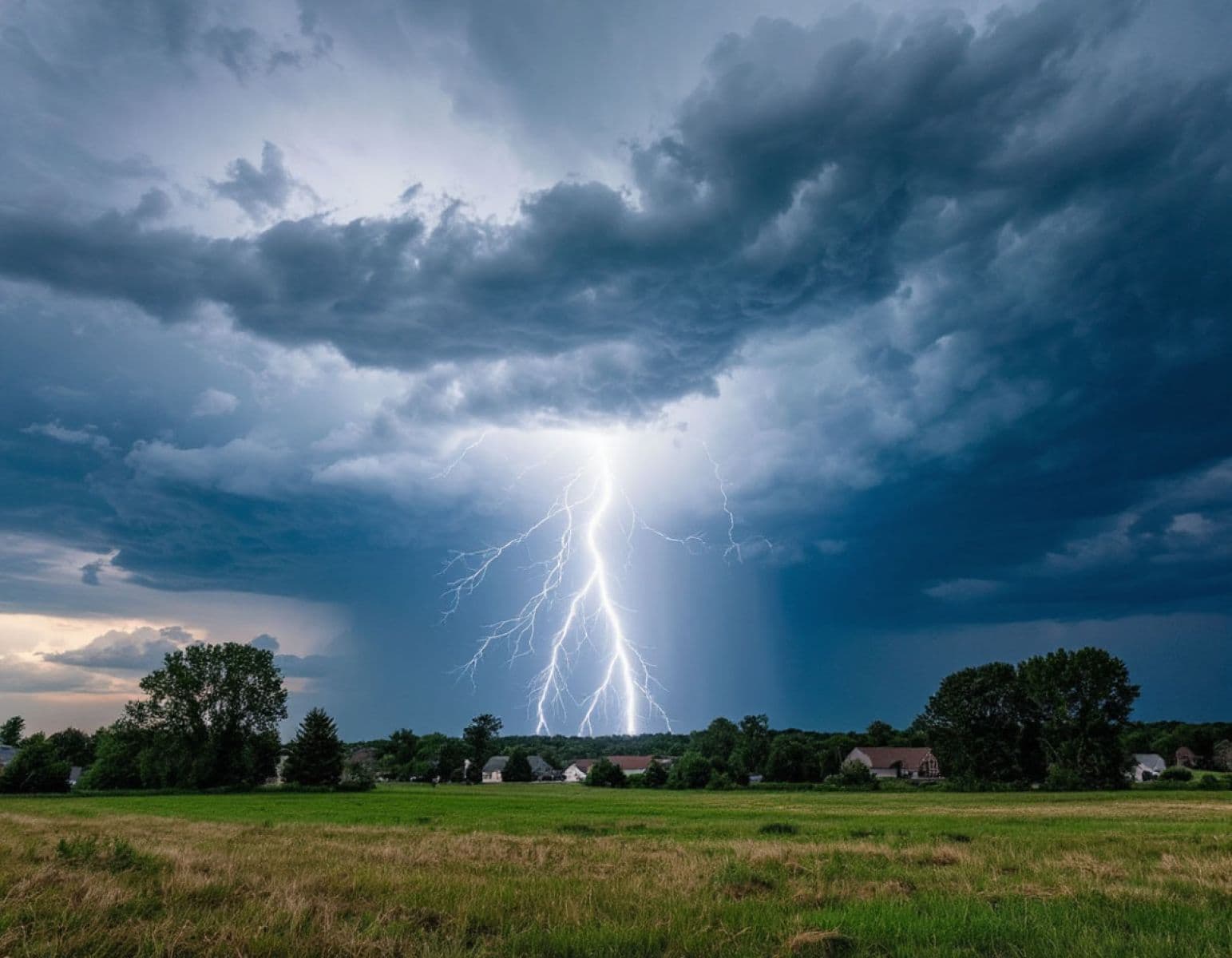Rostov's Skyward Drama: Navigating a Summer of Extremes
Rostov-on-Don navigates an extreme summer: record heat followed by dramatic storms. Discover how the city adapts and what these intense shifts mean for its future climate.

From Blistering Peaks: Rostov's Record-Setting Heatwave
Rostov-on-Don recently endured an extraordinary meteorological event, as a blistering heatwave swept across southern Russia, culminating in a record-setting day on July 13th. This Sunday marked the season's most intense heat, with temperatures in soaring to an astonishing +41 degrees Celsius. To put this into perspective, nearby registered an even higher +42 degrees. The sheer intensity of this heatwave wasn't confined to Rostov; it shattered long-standing historical records in several other southern Russian cities. , for instance, broke an absolute maximum set in 1948, surpassed its 1913 record, and eclipsed a mark dating all the way back to 1897. Such widespread and severe temperature anomalies underscore the unprecedented nature of this summer's conditions. Forecasters initially warned that this oppressive heat would persist throughout the latter half of July, leaving residents grappling with the relentless sun and seeking any respite from the suffocating warmth. The city truly felt the full force of a summer pushed to its thermal limits, prompting widespread discussion about the changing dynamics of its regional climate.
The Shifting Sands: Anticipating Relief and Volatility
Just as the city seemed to be baking under the relentless sun, a collective sigh of relief began to ripple through . Meteorologists were finally forecasting a gradual, yet significant, retreat of the scorching heat. By July 18th, a noticeable shift was expected, with daytime temperatures predicted to drop to a more manageable +32 to +37 degrees Celsius. Even more welcome was the anticipated cooling of the nights, with temperatures potentially plunging to a refreshing +14 degrees in the northern parts of the region, while the south and east would still experience warmer nights around +25 degrees. This promised not just a reprieve from the daytime swelter but also a much-needed chance for the city to cool down overnight. Crucially, alongside this thermal adjustment, the forecast hinted at the onset of volatility: short-term rains accompanied by thunderstorms were deemed possible during the evenings and nights. This marked a turning point, signaling the end of the dry, oppressive heat and the beginning of a more dynamic atmospheric pattern, paving the way for the weekend's full thermal reset.
Thunder's Embrace: The Dual Nature of Summer Storms
The weekend of July 19th and 20th truly delivered on the promise of relief, but it arrived cloaked in the dramatic spectacle of summer storms, revealing their inherent dual nature. As the oppressive heat finally relinquished its grip, bringing temperatures down to a much more comfortable range, the skies above began to flex their muscles. What started as welcome, short-term showers evolved into full-blown thunderstorm rains, painting the horizon with flashes of lightning and rumbling thunder. On one hand, these downpours were a much-needed blessing, washing away the lingering heat and humidity, cooling the air, and rejuvenating the parched landscape. After weeks of intense dryness, the rain provided vital moisture. Yet, as is often the case with powerful summer storms, they carried a disruptive edge. While the provided information doesn't detail specific damages, such intense weather events can bring heavy rainfall, potential localized flooding, and strong winds, reminding residents that while relief is welcome, it sometimes comes with its own set of challenges, demanding vigilance and readiness from the city's infrastructure and its inhabitants.
Beyond the Thermometer: Adapting to Rostov's New Climate Rhythm
The dramatic summer saga in , marked by an unprecedented heatwave swiftly followed by volatile thunderstorms, offers more than just a fleeting weather report; it serves as a potent indicator of shifting climate patterns. Such extreme swings, from record-shattering highs to sudden, intense downpours, challenge the traditional understanding of the region's summer rhythm. It's a clear signal that Rostov, like many cities globally, may need to brace for a future characterized by increased meteorological unpredictability. This isn't merely about adjusting daily routines; it calls for a deeper, more strategic adaptation. The city's resilience will increasingly depend on proactive measures: enhancing urban infrastructure to handle both prolonged heat stress and sudden deluges, improving early warning systems for severe weather, and fostering greater public awareness about climate-related risks. Embracing this "new climate rhythm" means moving beyond reactive responses to building a more robust, climate-resilient urban environment, ensuring that can not only weather these extremes but thrive amidst them. The conversation is no longer just about today's forecast, but about shaping tomorrow's landscape.
Related Articles

Voronezh's Volatile Summer: Decoding the Orange Alert and Nature's Fury

Voronezh's Volatile Summer: Decoding the Orange Alert and Nature's Fury

Voronezh's Weather Whiplash: Surviving the Sudden Swing from Heatwave to Tempest

Voronezh's Weather Whiplash: Surviving the Sudden Swing from Heatwave to Tempest

The Thermometer's Tantrum: Unpacking Earth's Unpredictable Temperature Swings

The Thermometer's Tantrum: Unpacking Earth's Unpredictable Temperature Swings

The Silent Roar of the Sun: Enduring Southern Russia's Record Heatwave
